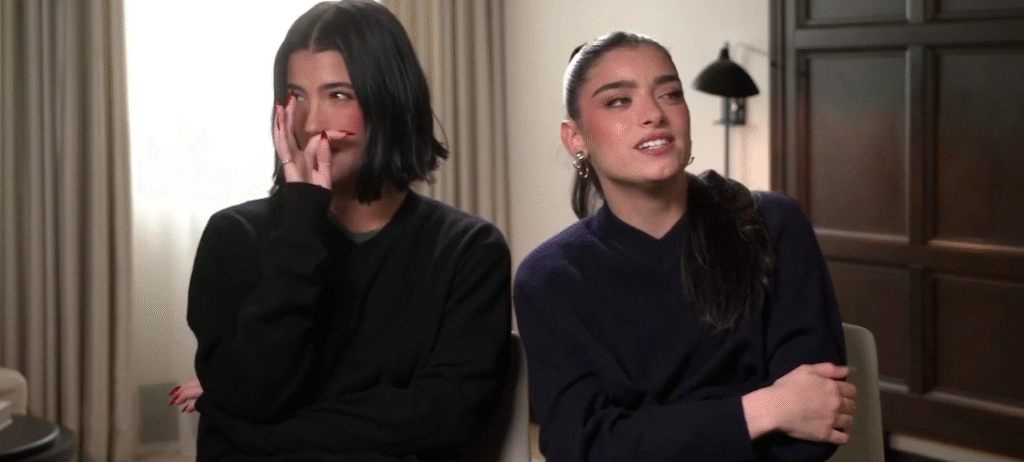Dixie D’Amelio – Bio and Personal Profile
| Attribute | Details |
|---|---|
| Full Name | Dixie Jane D’Amelio |
| Date of Birth | August 12, 2001 |
| Age | 23 |
| Height | 5 ft 6 in (1.68 m) |
| Weight (approx.) | 121 lbs (55 kg) |
| Diagnosed Conditions | PMDD (Premenstrual Dysphoric Disorder), reportedly Graves’ Disease |
| Profession | Singer, Social Media Influencer, Reality TV Star |
| Known For | TikTok fame, “The D’Amelio Show,” music releases |
| Net Worth (2025 est.) | $15 million |
| Instagram Profile | @dixiedamelio |

Concern, conjecture, and commentary erupted among fans when Dixie D’Amelio started to look thinner in late 2024. But instead of allowing rumors to get out of hand, she took charge of the story. Dixie made the incredibly brave and transparent admission that her weight fluctuations were caused by a long-overdue diagnosis of premenstrual dysphoric disorder, or PMDD, rather than by dietary fads or fashion trends.
She revealed the severity of her symptoms, which include severe depression, irritability, insomnia, and what she called “losing the will to live,” during an episode of The D’Amelio Show. Just that sentence touched a nerve, bringing to light the depth of emotion that many people bear in silence. This was a significant departure from the polished influencer fitness story that fans had been expecting. This was profoundly human, uncomfortably honest.
Online skeptics quickly blamed disordered eating for her thinner appearance, but others suggested Graves’ disease, an autoimmune condition that causes severe weight loss, as a possible cause. The emotional and physical toll that such diagnoses frequently carry was highlighted by Reddit commenters who shared personal stories and made remarkably similar comparisons to Dixie’s circumstances. These difficulties are exacerbated for young women by digital surveillance and societal expectations, especially for those who are constantly watched.
Dixie has tried to regain her health in recent months by following an extremely approachable routine. Not as a boast, but as a grounding exercise, she begins her morning by performing 100 squats while brushing her teeth. She frequently dances, occasionally runs, and walks her dogs. These movements are ways for her to remain in her body during a time when it is frequently unpredictable; they are not motivated by body metrics or calorie counts.
Dixie’s story provides especially helpful insight into how chronic conditions intersect with fame because it brings attention to her struggles in a public setting. Before receiving a formal diagnosis, she had suffered from PMDD symptoms for seven years, as she disclosed in an Instagram Live. Particularly for young women whose pain is all too frequently written off as dramatic or hormonal, that startling delay speaks volumes about the gaps in healthcare literacy.
Dixie has significantly enhanced influencers’ attitudes toward transparency through strategic storytelling. Instead of using vulnerability as branding, she has opted to speak honestly and let people make their own judgments. Her quote, “I didn’t know you weren’t supposed to want to die every month,” is still very potent because it serves as a reminder to viewers that suffering normalizes itself if left untreated.
Social media was rocked by her appearance at the 2023 MTV Video Music Awards. She became a visual case study for a topic that was becoming more and more relevant, dressed in black and unquestionably slender. Although fans were quick to comment, Dixie opted to remain silent that night, allowing her poise and composed demeanor to speak for her.
Dixie’s story is not unique; it is part of a larger trend. Halsey has publicly shared their personal struggles with autoimmune diseases. Jessie J disclosed issues that almost put a stop to her career. These tales, which are incredibly successful at changing public opinion, demonstrate how the entertainment sector is progressively making room for medical narratives that don’t conclude with glamour but rather with progress.
Remote work, growing health concerns, and changes in lifestyle during the pandemic provided an environment that was conducive to the emergence or exacerbation of autoimmune diseases. Physicians have observed a discernible rise in diagnoses among those under 30. This silent health crisis is still developing, regardless of whether it is related to prolonged COVID or stress-related triggers. When considered from that perspective, Dixie’s weight loss becomes a part of a more significant and urgent discussion.
Dixie’s experience is similar to thousands of others’ through present participles like “navigating emotional volatility” and “balancing fame and fatigue.” Her wellness regimen involves relaxation, days off, and sporadic disengagement from public life, in contrast to stylized celebrity wellness regimens. When done in silence, that type of self-care is incredibly resilient.
Charli, her sister, has also had to adapt. Dixie alluded to the emotional distance that frequently accompanies illness within even close families when she said, “Charli wasn’t really around when I was diagnosed.” Their show’s viewers witnessed a heartwarming moment as Charli made an attempt to comprehend, her attempts tinged with confusion but based in love. Many viewers who were dealing with similar conflicts in their own homes found this tension, despite its pain, to be remarkably familiar.
Despite all of this, Dixie has managed to keep up a more casual, artistically controlled online persona that is supported by a quiet fortitude. She shares videos with friends, music updates, and selfies from Paris Fashion Week. But behind every picture is a continuous health journey. She is creating a space where beauty and illness can coexist by incorporating honesty into her public persona.
Dixie’s contribution to this transition will probably be better understood in the upcoming years as mental health continues to move from taboo to topic. She spoke the truth when it was most important, not because she wanted to be the leader of a movement. Her openness to sharing, despite instances of public misinterpretation, feels especially novel at a time when genuineness is frequently suppressed.

